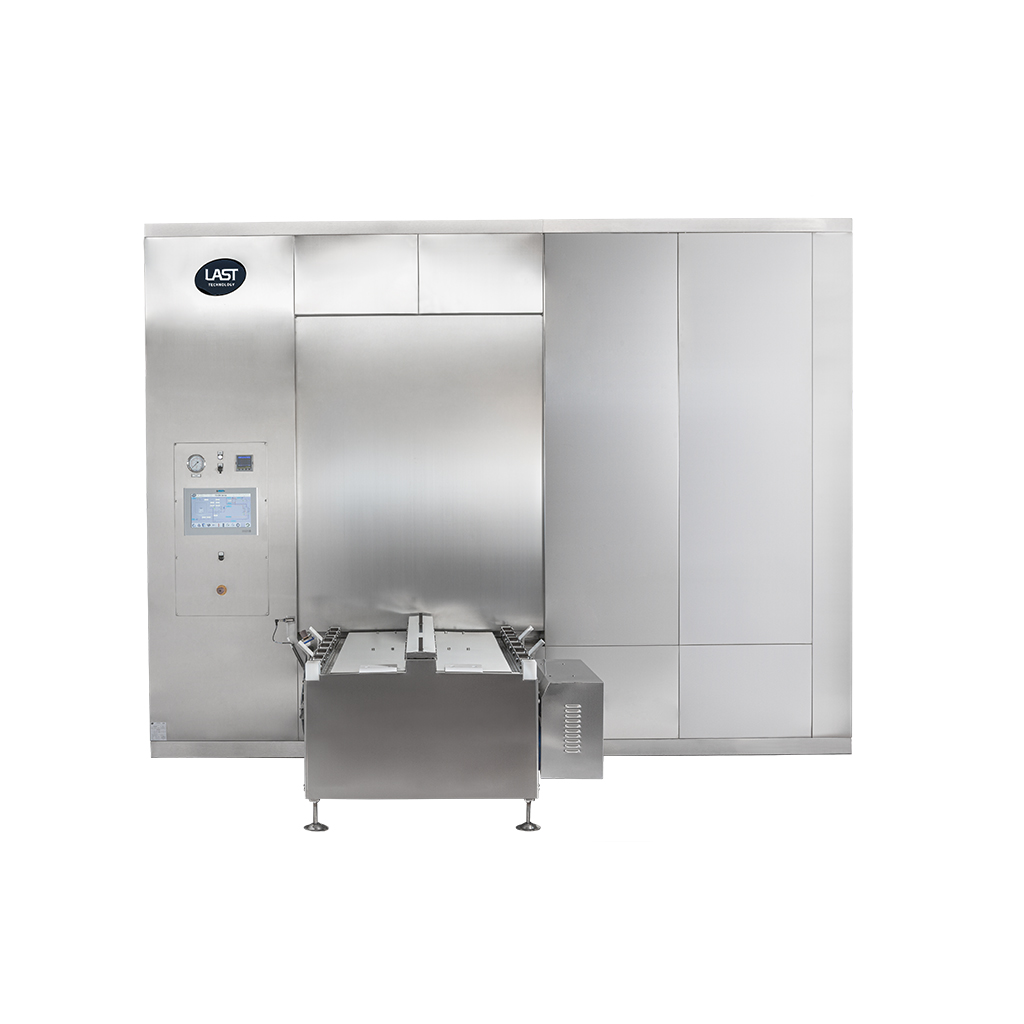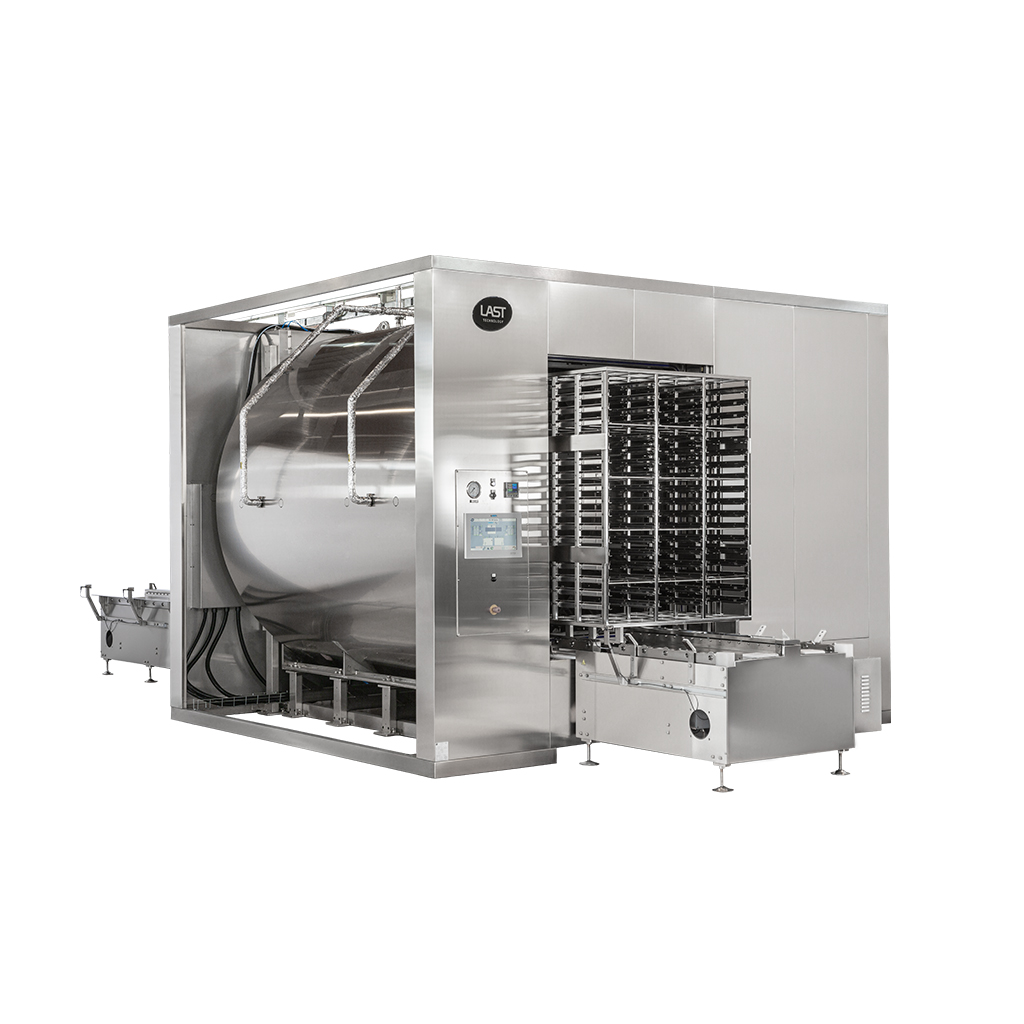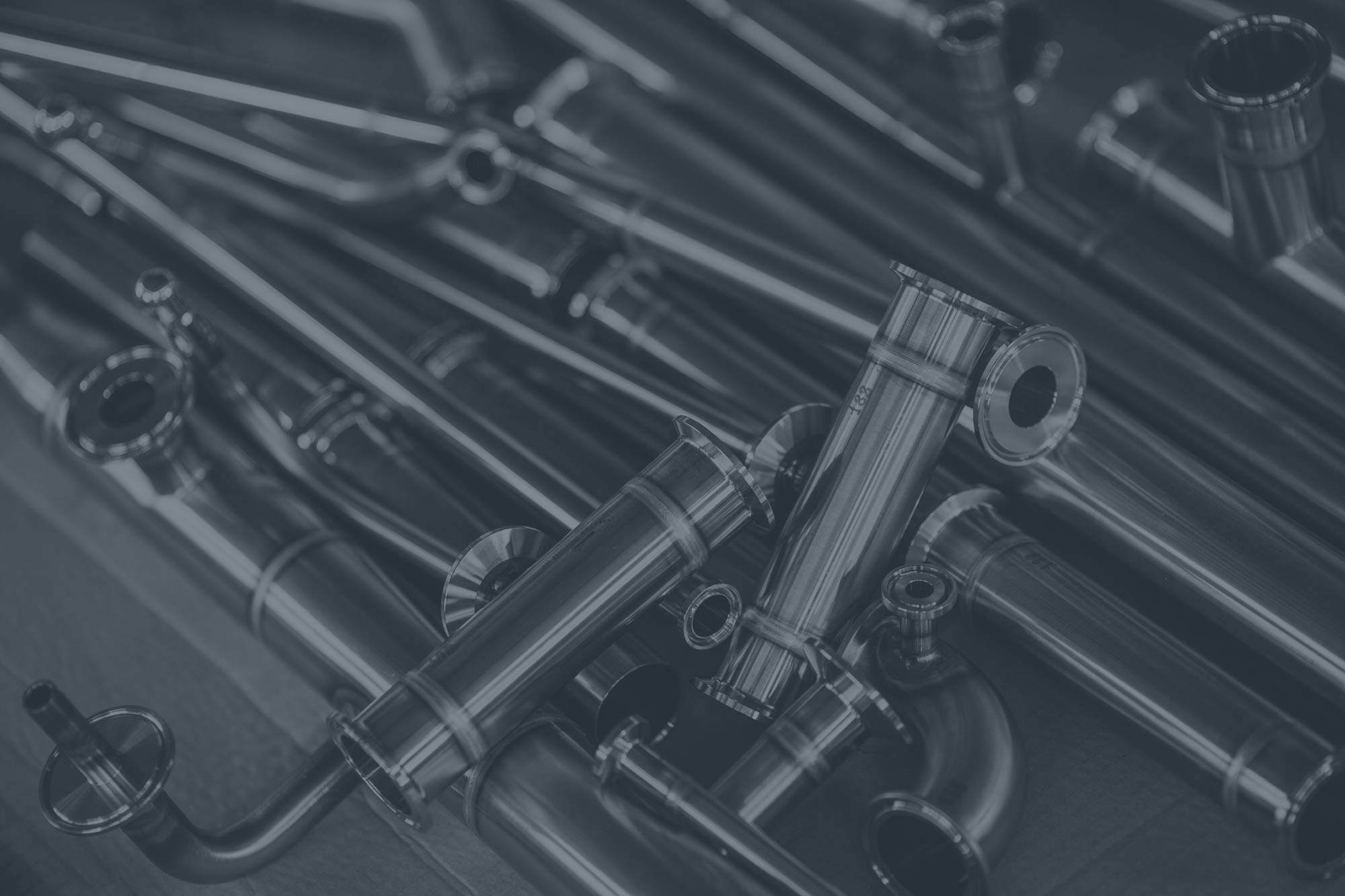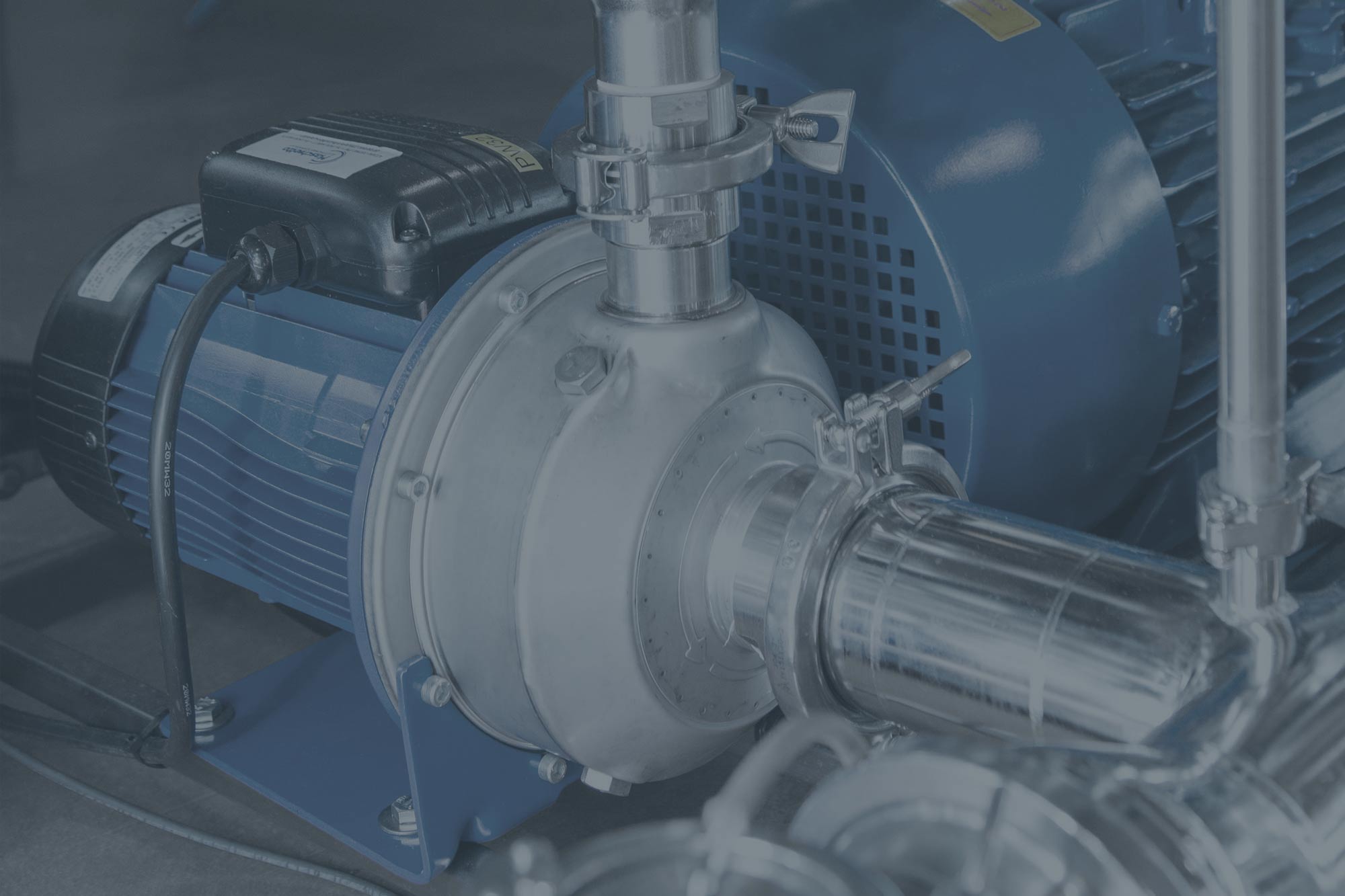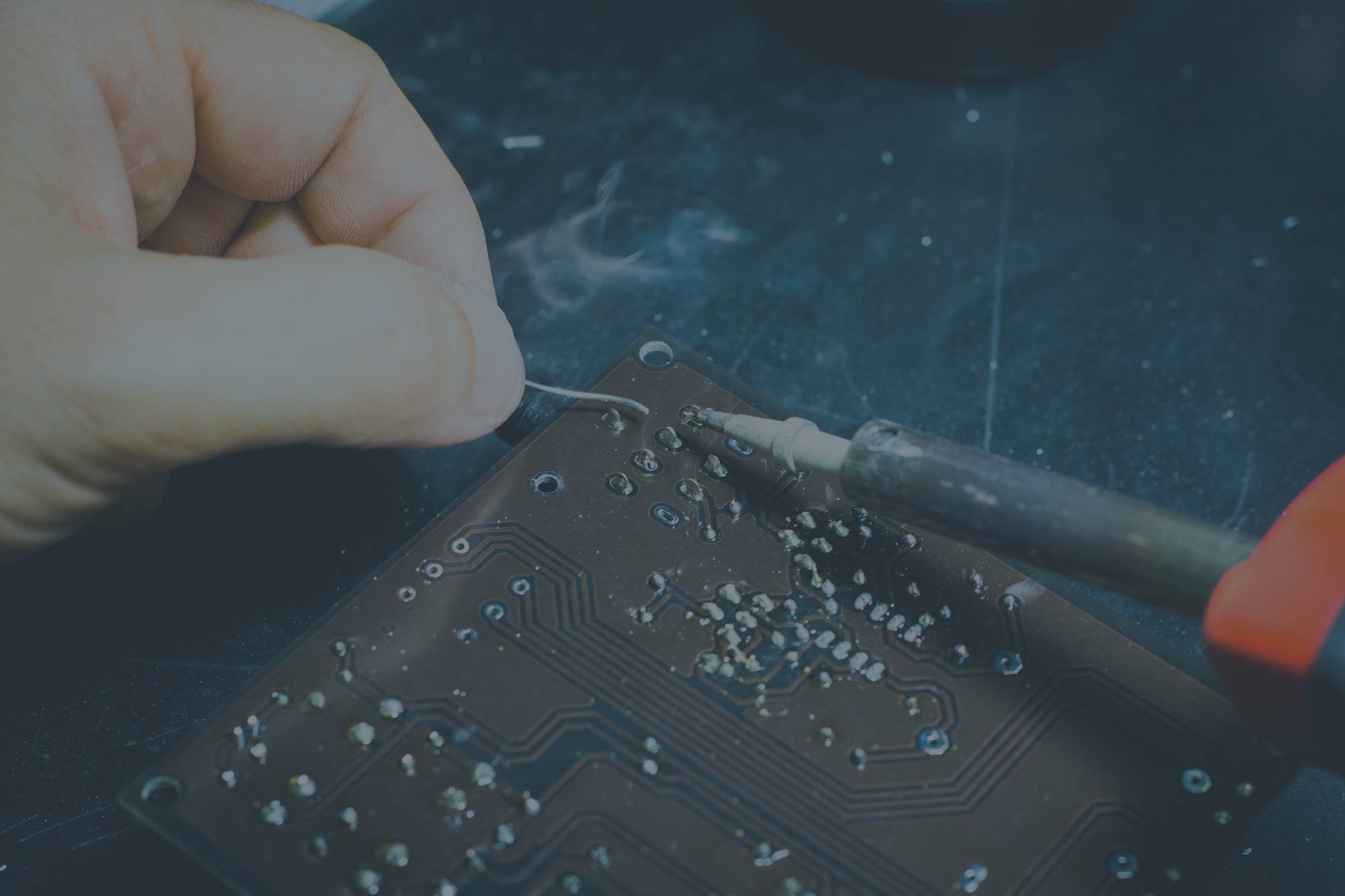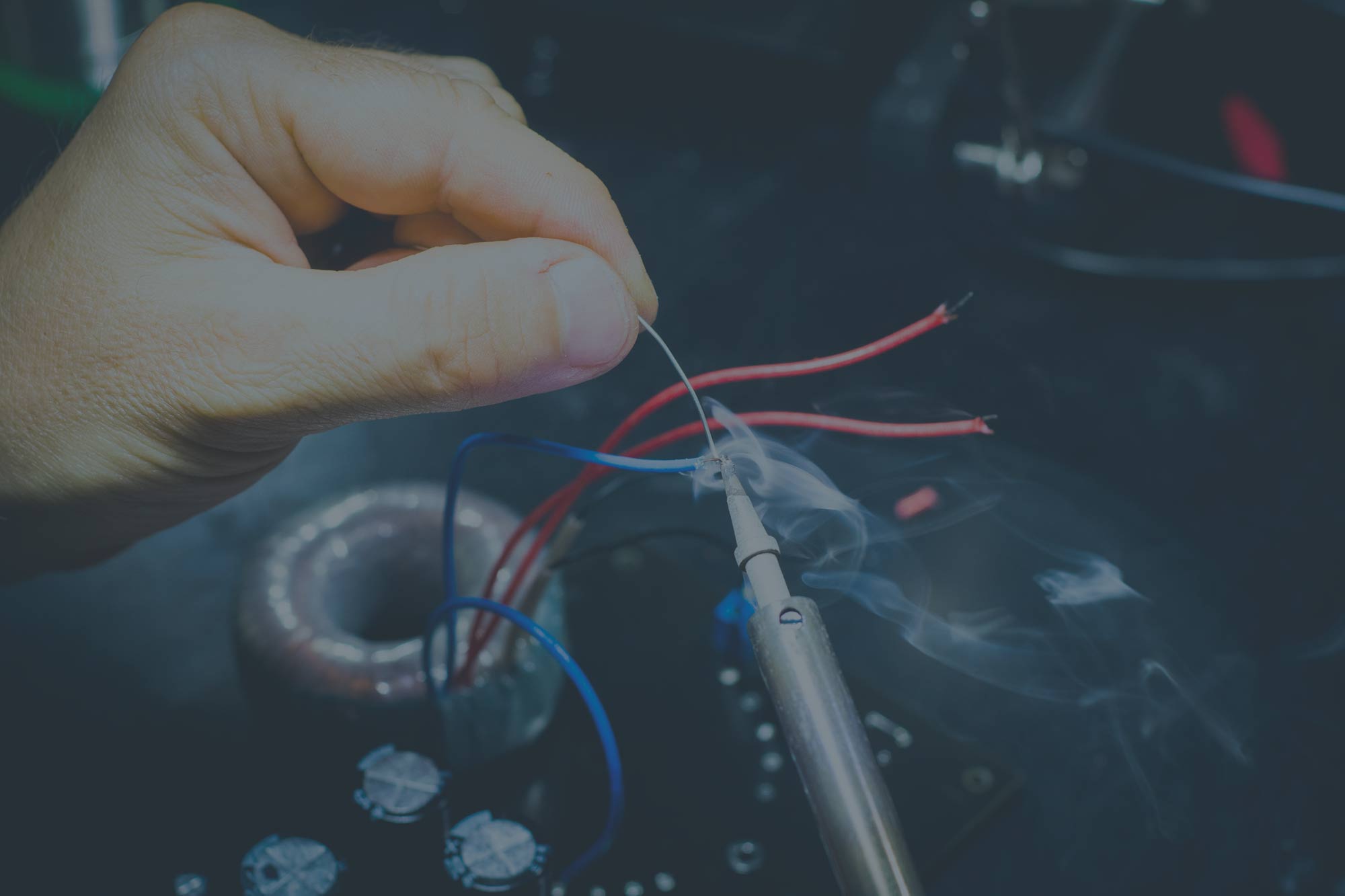
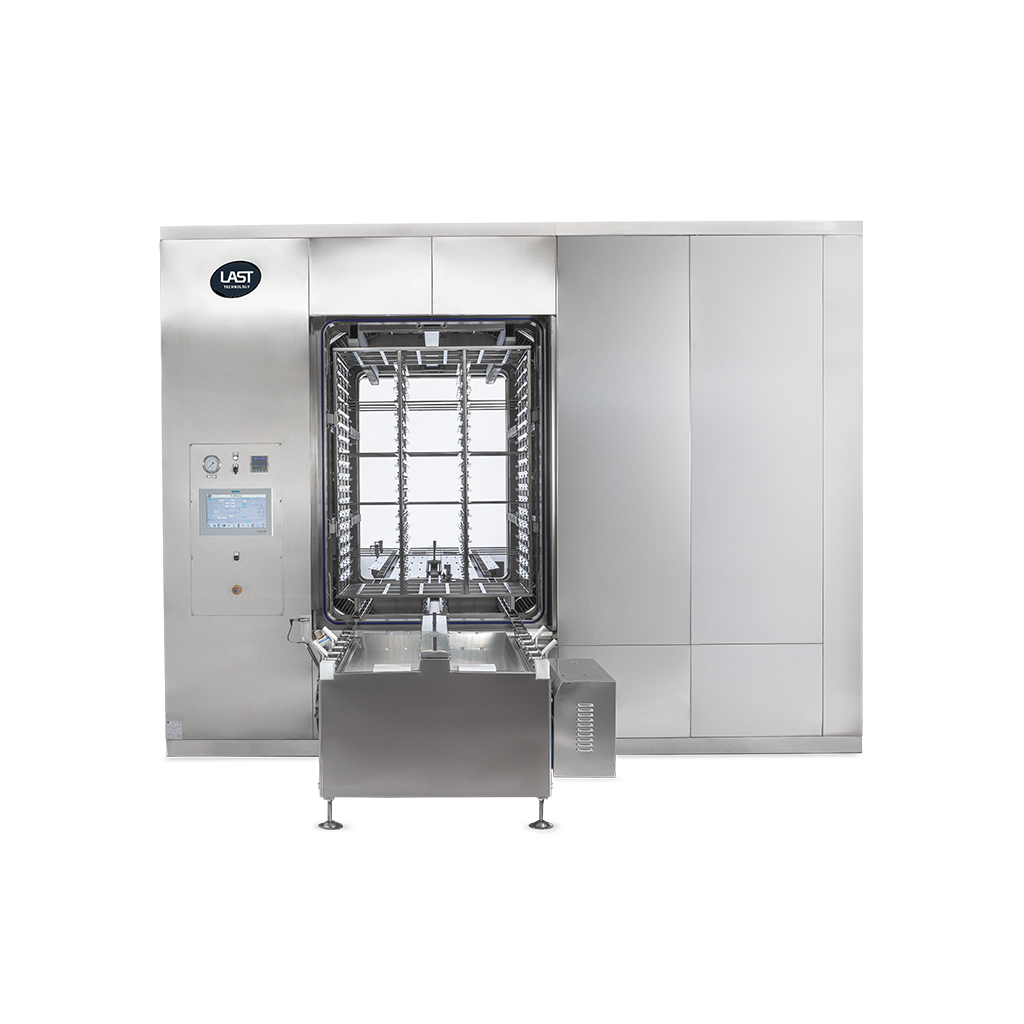
Predefined and “custom” programmes for every need. The equipment process is developed by our Automation Department, according to the current regulations/standards and the type of product being sterilized.
Terminal sterilization using a mixture of Air + Steam
An integrated ventilation system that mixes the clean steam and air together, thus creating the sterilization medium.
This process method is recommended for complex plastic or glass containers, such as pre-filled syringes or vials in which condensate may form and become problematic for the finished product. The system ensures optimum heat distribution throughout the entire sterilization phase (temperature deviation below ± 1°C). These autoclaves also boast a better drying process, thanks to the ventilation system that prepares the unloaded product for labelling and packaging.
Terminal sterilization using Superheated Water
A high-flow water recirculation system, thanks to the centrifugal pumps and “double-head multitube” heat exchangers which allow a “water” medium (WFI or PW) to be used as a means of transferring heat to warm up, sterilize and cool down the load. The system ensures optimum heat distribution throughout the entire sterilization phase (temperature deviation below ± 1°C). This process method provides for faster cycles but the treated product comes out still damp. Nevertheless, it remains the preferred method in most cases, due to its simplicity, cost-effectiveness and ease of validation.
- Circular sterilisation chamber with square or rectangular hatches (doors).
- For the air + steam mixture process, a flat/circular cavity completely wraps around the chamber for rapid and uniform heating/cooling of the loads.
- For the superheated water process, the chamber is with single lining (without cavity).
- The chamber is positioned on a base that has been designed specifically to evenly distribute the weight on the floor.
- Internal structure for rotation of the load with electrical-mechanical drive.
- The bottom of the chamber converges towards the drain sump to facilitate the disposal of condensation and water.
- Two 2” tri-clamp ferrules are welded to the chamber for validation purposes (temperature uniformity mapping and pressure tests).
- All of the chambers internal surfaces are mechanically polished and then subjected to chemical degreasing, pickling and passivation treatments. Surface finish: ≤ 0.35 micron.
- Above-floor or recessed chamber installation possible (depending on the size).
cGMP Terminal sterilizers with rotary load
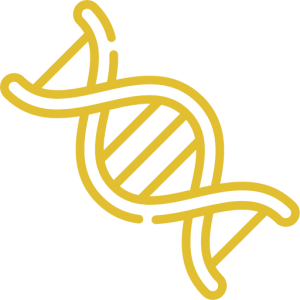 PHARMA DIVISION
PHARMA DIVISION
CGMP TERMINAL STERILIZER DESCRIPTION
The TS Roto have been specifically designed to terminally sterilise liquids in sealed containers, such as plastic bags, glass bottles, BFS bottles, syringes, vials, etc. In fact, their design allows for automatic variable pressure compensation based on the temperature difference (ΔT) of the product probes (RTD) inserted on a “sample” container. This type of check prevents the plastic containers from deforming, becoming damaged and changing colour.
![]() LIQUIDS
LIQUIDS
![]() MIXED AIR + STEAM or SUPERHEATED WATER
MIXED AIR + STEAM or SUPERHEATED WATER
![]() 105°C – 121°C
105°C – 121°C

Predefined and “custom” programmes for every need. The equipment process is developed by our Automation Department, according to the current regulations/standards and the type of product being sterilized.
Terminal sterilization using a mixture of Air + Steam
An integrated ventilation system that mixes the clean steam and air together, thus creating the sterilization medium.
This process method is recommended for complex plastic or glass containers, such as pre-filled syringes or vials in which condensate may form and become problematic for the finished product. The system ensures optimum heat distribution throughout the entire sterilization phase (temperature deviation below ± 1°C). These autoclaves also boast a better drying process, thanks to the ventilation system that prepares the unloaded product for labelling and packaging.
Terminal sterilization using Superheated Water
A high-flow water recirculation system, thanks to the centrifugal pumps and “double-head multitube” heat exchangers which allow a “water” medium (WFI or PW) to be used as a means of transferring heat to warm up, sterilize and cool down the load. The system ensures optimum heat distribution throughout the entire sterilization phase (temperature deviation below ± 1°C). This process method provides for faster cycles but the treated product comes out still damp. Nevertheless, it remains the preferred method in most cases, due to its simplicity, cost-effectiveness and ease of validation.
- Circular sterilisation chamber with square or rectangular hatches (doors).
- For the air + steam mixture process, a flat/circular cavity completely wraps around the chamber for rapid and uniform heating/cooling of the loads.
- For the superheated water process, the chamber is with single lining (without cavity).
- The chamber is positioned on a base that has been designed specifically to evenly distribute the weight on the floor.
- Internal structure for rotation of the load with electrical-mechanical drive.
- The bottom of the chamber converges towards the drain sump to facilitate the disposal of condensation and water.
- Two 2” tri-clamp ferrules are welded to the chamber for validation purposes (temperature uniformity mapping and pressure tests).
- All of the chambers internal surfaces are mechanically polished and then subjected to chemical degreasing, pickling and passivation treatments. Surface finish: ≤ 0.35 micron.
- Above-floor or recessed chamber installation possible (depending on the size).
cGMP Terminal sterilizers with rotary load
 PHARMA DIVISION
PHARMA DIVISION
CGMP TERMINAL STERILIZER DESCRIPTION
The TS Roto have been specifically designed to terminally sterilise liquids in sealed containers, such as plastic bags, glass bottles, BFS bottles, syringes, vials, etc. In fact, their design allows for automatic variable pressure compensation based on the temperature difference (ΔT) of the product probes (RTD) inserted on a “sample” container. This type of check prevents the plastic containers from deforming, becoming damaged and changing colour.
![]() LIQUIDS
LIQUIDS
![]() MIXED AIR + STEAM or SUPERHEATED WATER
MIXED AIR + STEAM or SUPERHEATED WATER
![]() 105°C – 121°C
105°C – 121°C

cGMP Terminal sterilizers with rotary load
 PHARMA DIVISION
PHARMA DIVISION
CGMP TERMINAL STERILIZER DESCRIPTION
The TS Roto have been specifically designed to terminally sterilise liquids in sealed containers, such as plastic bags, glass bottles, BFS bottles, syringes, vials, etc. In fact, their design allows for automatic variable pressure compensation based on the temperature difference (ΔT) of the product probes (RTD) inserted on a “sample” container. This type of check prevents the plastic containers from deforming, becoming damaged and changing colour.
![]() LIQUIDS
LIQUIDS
![]() MIXED AIR + STEAM or SUPERHEATED WATER
MIXED AIR + STEAM or SUPERHEATED WATER
![]() 105°C – 121°C
105°C – 121°C
Predefined and “custom” programmes for every need. The equipment process is developed by our Automation Department, according to the current regulations/standards and the type of product being sterilized.
Terminal sterilization using a mixture of Air + Steam
An integrated ventilation system that mixes the clean steam and air together, thus creating the sterilization medium.
This process method is recommended for complex plastic or glass containers, such as pre-filled syringes or vials in which condensate may form and become problematic for the finished product. The system ensures optimum heat distribution throughout the entire sterilization phase (temperature deviation below ± 1°C). These autoclaves also boast a better drying process, thanks to the ventilation system that prepares the unloaded product for labelling and packaging.
Terminal sterilization using Superheated Water
A high-flow water recirculation system, thanks to the centrifugal pumps and “double-head multitube” heat exchangers which allow a “water” medium (WFI or PW) to be used as a means of transferring heat to warm up, sterilize and cool down the load. The system ensures optimum heat distribution throughout the entire sterilization phase (temperature deviation below ± 1°C). This process method provides for faster cycles but the treated product comes out still damp. Nevertheless, it remains the preferred method in most cases, due to its simplicity, cost-effectiveness and ease of validation.
- Circular sterilisation chamber with square or rectangular hatches (doors).
- For the air + steam mixture process, a flat/circular cavity completely wraps around the chamber for rapid and uniform heating/cooling of the loads.
- For the superheated water process, the chamber is with single lining (without cavity).
- The chamber is positioned on a base that has been designed specifically to evenly distribute the weight on the floor.
- Internal structure for rotation of the load with electrical-mechanical drive.
- The bottom of the chamber converges towards the drain sump to facilitate the disposal of condensation and water.
- Two 2” tri-clamp ferrules are welded to the chamber for validation purposes (temperature uniformity mapping and pressure tests).
- All of the chambers internal surfaces are mechanically polished and then subjected to chemical degreasing, pickling and passivation treatments. Surface finish: ≤ 0.35 micron.
- Above-floor or recessed chamber installation possible (depending on the size).
We may be small, but we can achieve great things.
Thanks to our customisable after-sales service packages, we offer solutions to suit every need. Choose the one that suits you best!
Customization is quick and easy
Keep up to date with the latest news from the LAST Technology world and let us steer you towards the most suitable service for you!
